For the third time in as many days, the Japan Air Self Defense Force has sent fighter jets out to monitor drones belonging to China’s People’s Liberation Army flying in the East China Sea and the Miyako Strait, which lies southwest of the island of Okinawa. These intercepts underscore the Chinese military’s growing unmanned aircraft capabilities, as well as the strategic significance of this body of water, which is one of a number of maritime passages linking the East China Sea to the Philippine Sea, and the broader Western Pacific Ocean.
This recent flurry of activity began on Aug. 24, 2021, when a lone Tengoen TB-001 Scorpion medium-altitude, long-endurance (MALE) drone flew into the East China Sea northwest of Okinawa. A single People’s Liberation Army (PLA) Harbin BZK-005 MALE drone then flew a sortie back and forth through the Miyako Strait yesterday. Today, another TB-001 conducted a similar flight through the Miyako Strait. In all three cases, the JASDF scrambled fighters to investigate the Chinese drones’ activities.

On both Aug. 25 and Aug. 26, one Shaanxi Y-8Q maritime patrol plane and one Shaanxi Y-9JB electronic intelligence aircraft accompanied the drones on their flights, according to Japanese officials. The JASDF did not report any other PLA aerial activity related to the TB-001 sortie on Aug. 24.

BZK-005 series drones are primarily long-range intelligence, surveillance, and reconnaissance (ISR) platforms and the original design was reportedly capable of flying continuously for up to 40 hours at a time. The standard BZK-005, which was first unveiled in 2006, has a single pusher propeller, a pair of swept main wings, and a twin-boom tail configuration. The PLA did also unveil an armed variant, with a revised center fuselage, known as the BZK-005C, in 2018.
The main sensor system seen on most BZK-005 variants is a turret under the nose of a type that typically contains a mix of electro-optical and infrared full-motion video cameras. Pictures emerged last year of another version of this drone, called the BZK-005E, with a radar system under the nose, instead and the electro-optical turret relocated to its lower central fuselage area.
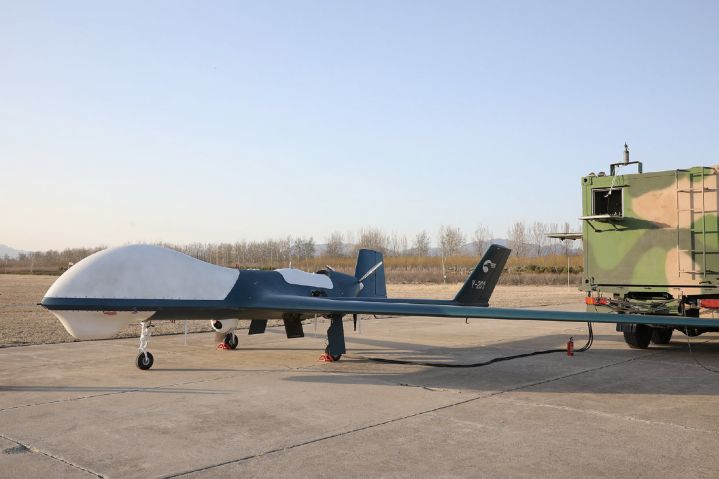
Pictures that the JASDF released of the BZK-005 flying through the Miyako Strait this week show this more recent configuration, with the radome under its nose and an under-fuselage optics turret. The BZK-005 is capable of beyond-line-of-sight operations via satellite control and can be configured to be multi-intelligence gathering platforms.
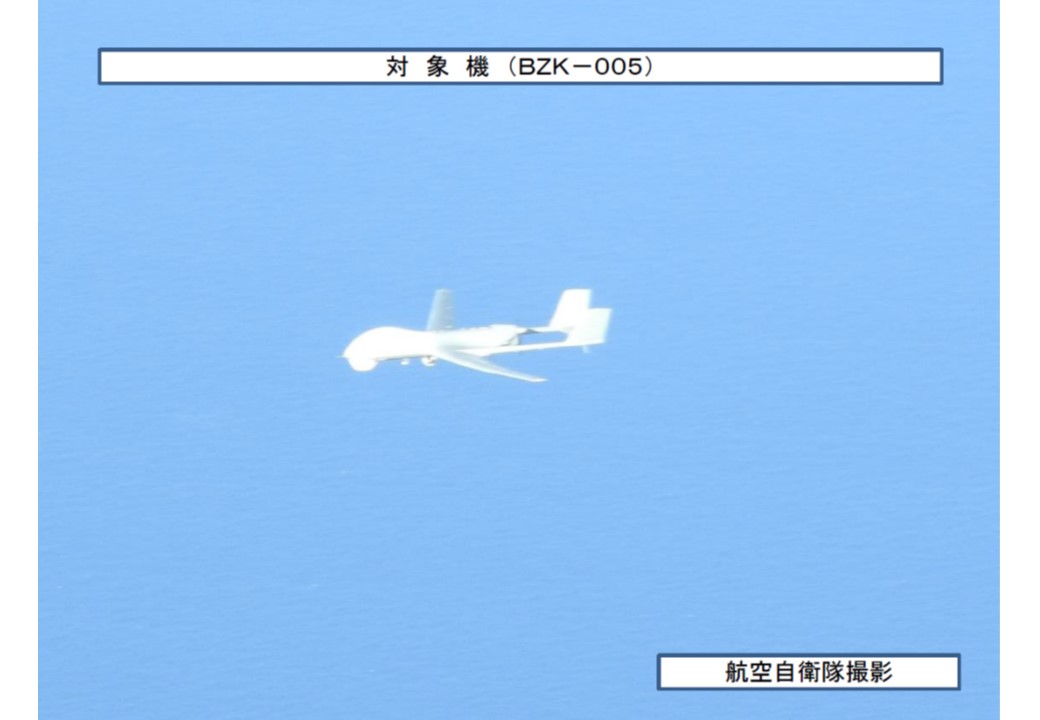

The TB-001 Scorpion is also a long-endurance drone with a twin-boom tail, but is substantially different in its overall design from the BZK-005. The larger Scorpion, which was the first unmanned aircraft to come out of Tengoen, a company that was only established in 2016, has a pair of engines, each driving a single propeller, one on either side of its central fuselage under its straight, high-mounted main wing.
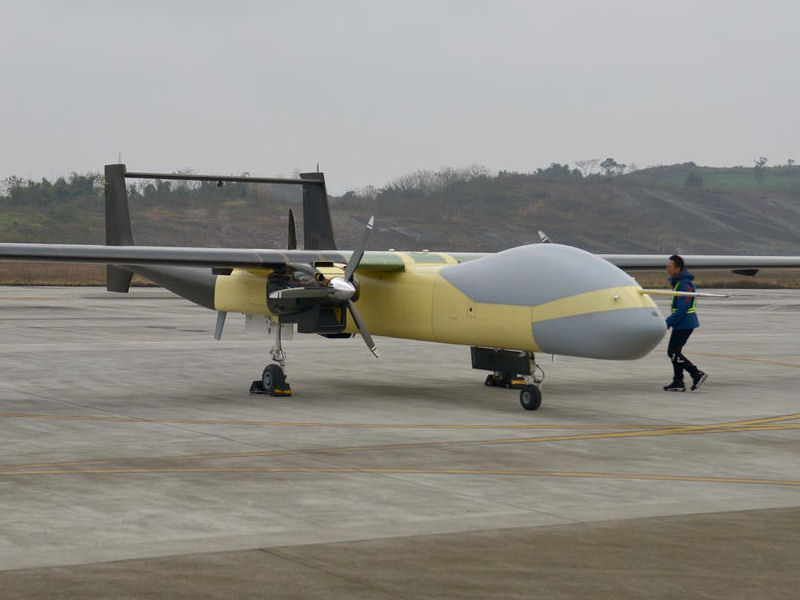
Unlike the BZK-005, the TB-001 was designed from the outset as an armed drone, with four underwing hardpoints capable of carrying various stores, though it also has a sensor turret underneath its central fuselage. The pictures that the JASDF released of the Scoprions it intercepted this week do not show them carrying anything under their wings, but do show additional sensor systems, possibly a radar or electronic intelligence gathering pod, under their fuselages, as well as various antennas scattered around the airframe. Regardless, these twin-engine drones can be equipped with multi-intelligence gathering capabilities that are even more advanced than the TB-001, including a radar mounted in their noses. They also have full beyond-line-of-sight operations capabilities.
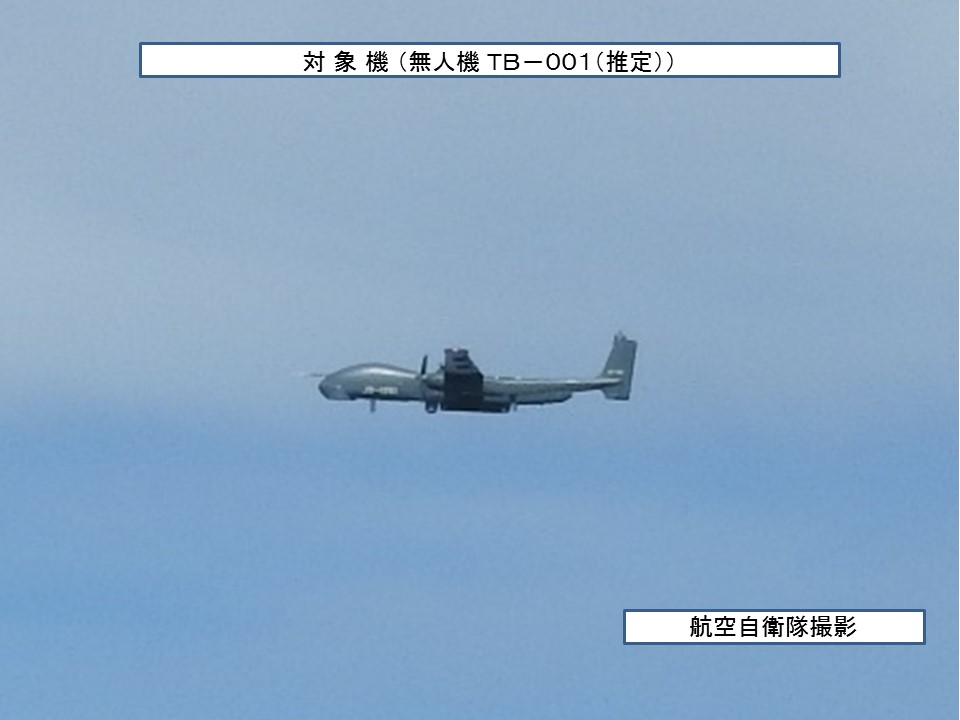

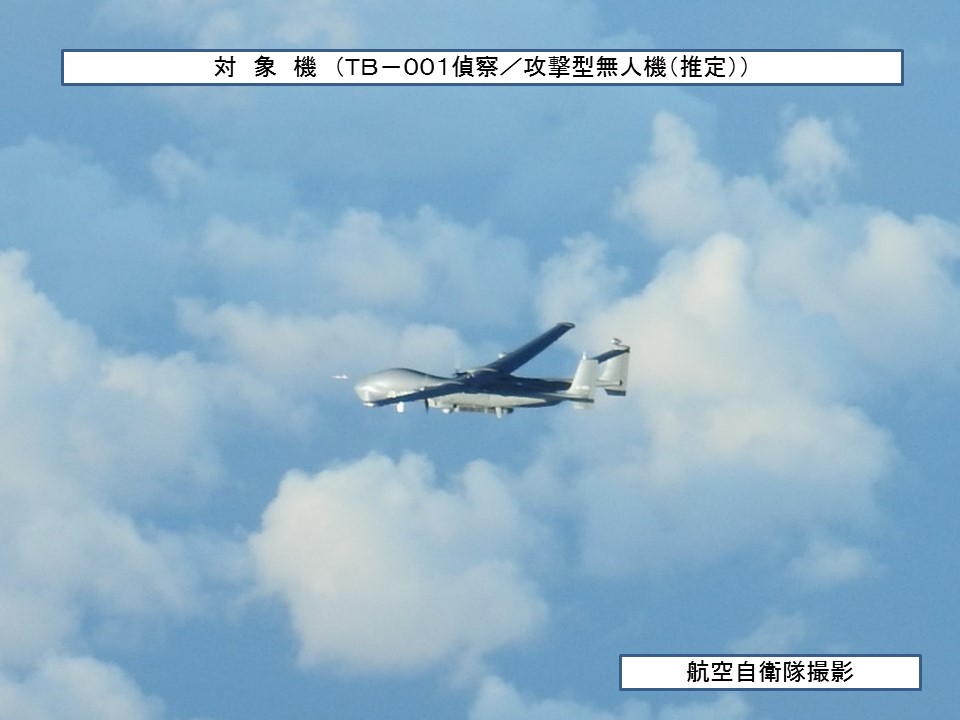
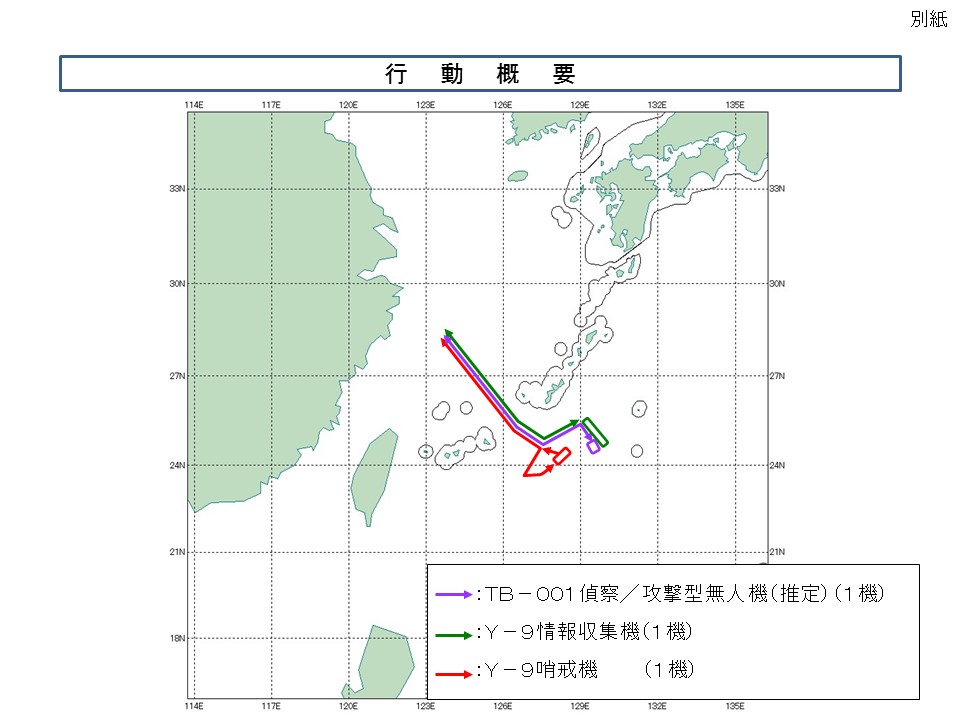
These drones provide China with an efficient ability to collect multiple types of intelligence over and around the highly strategic strait. These can range from mapping and cataloging electronic emissions from air defense systems to taking detailed radar maps of the area and collecting imagery of vessels of interest. All of this is especially important considering Chinese carrier groups traverse the strait with concerning regularity these days.
While these drones are advanced, being somewhere in the range of the MQ-1 to MQ-9 class (very roughly), China has far more advanced systems in operation, especially in terms of high flying surveillance types, and in the developmental pipeline. But those are not really needed for this type of non-combat task, which also taxes the JASDF’s alert fighter infrastructure just by being out there.
It will be interesting to see if the use of these drones over three days straight is indicative of a new pattern or some sort of naval movement that will soon materialize in the region. A trio of Chinese warships, two destroyers and a frigate, did also sail through the Miyako Strait on Aug. 24.
Regardless, these drone sorties are just another reminder of China’s growing unmanned capabilities and how they will soon become yet another major tactical and strategic challenge in the increasingly tense Indo-Pacific region.
Contact the author: joe@thedrive.com
